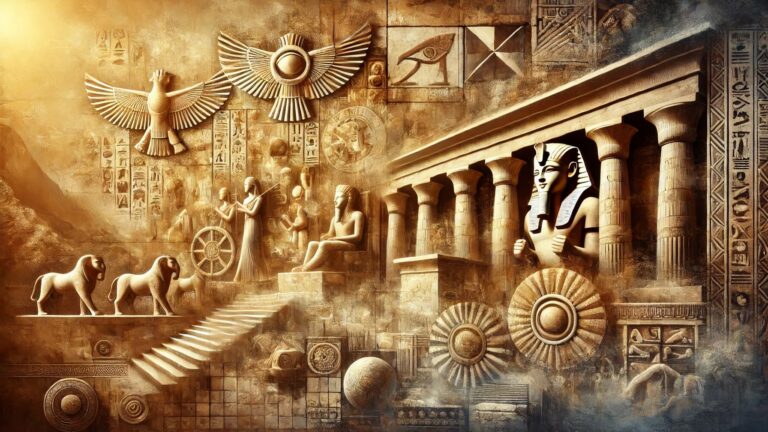Art has always been a powerful form of expression, transcending time and culture. From the earliest cave paintings to the grand monuments of ancient civilizations, art has documented the history of humanity, providing us with a glimpse into the beliefs, practices, and everyday lives of people who lived long before us. One fascinating area of this journey through history is “ancient artz” — a term that refers to the art produced in ancient cultures, and the contemporary appreciation and study of it. In this blog post, we’ll take a closer look at ancient artz, its significance, the different forms it has taken, and why it’s still so important today.
What Is Ancient Artz?
Ancient artz is a term that combines the study and appreciation of ancient artworks with modern-day understanding and exploration of these treasures. It encompasses a wide range of artistic creations from various ancient civilizations, including paintings, sculptures, pottery, and architecture. Whether it’s the intricate frescoes of Pompeii, the majestic pyramids of Egypt, or the delicate pottery of ancient Greece, ancient artz is a way of connecting with the distant past and understanding how art influenced the cultural and spiritual lives of early societies.
The Different Forms of Ancient Artz
Ancient artz spans multiple cultures and geographic locations, each with its unique style and method of creation. The following are some of the most well-known forms of ancient art that continue to inspire people today:
Cave Paintings
One of the earliest known forms of art, cave paintings were created by early humans who used natural pigments to paint on the walls of caves. These paintings often depict animals, hunting scenes, and symbols that scholars believe had spiritual or ritualistic significance. The most famous examples of cave art can be found in sites like Lascaux, France, and Altamira, Spain, where the images are thousands of years old but still vibrant and striking.
Egyptian Art
Ancient Egyptian art is perhaps some of the most recognizable in the world. Characterized by its symbolic nature and highly stylized forms, Egyptian art was deeply tied to religion and the afterlife. The artwork often depicted gods, pharaohs, and scenes from daily life, all painted in a highly organized and repetitive style. The use of hieroglyphics to convey meaning and the practice of mummification are key components of Egyptian culture that influenced their art.
Greek and Roman Art
The art of ancient Greece and Rome set the foundation for much of Western art and architecture. Greek art is known for its realism and idealized human forms, especially in sculpture. The Greeks focused on the human body, creating statues that were not only realistic but also idealized, such as the famous statues of the gods like Zeus and Athena. Roman art, while influenced by Greek styles, often focused on practicality and historical documentation. Roman murals, mosaics, and sculptures were used to celebrate military victories, honor emperors, and preserve important historical events.
Mesopotamian Art
Mesopotamia, often considered the cradle of civilization, produced some of the world’s earliest known art. From the Sumerians to the Babylonians, the art of ancient Mesopotamia was deeply linked to religious beliefs and political power. Large, intricately designed stone reliefs, statues of gods, and palatial murals often depicted gods, rulers, and everyday life. The famous Ishtar Gate of Babylon is one of the most stunning examples of Mesopotamian art, featuring intricate images of animals and divine figures.
The Importance of Ancient Artz in Today’s World
Why does ancient artz still matter today? What can we learn from these works of art that were created thousands of years ago? The answer lies in the fact that art is one of the most enduring ways humans have used to communicate. While languages and cultures have changed dramatically over time, the emotional and spiritual messages that ancient art conveys remain powerful and relevant.
Preserving History
Ancient artworks serve as a direct link to the past. They help us understand how ancient societies lived, what they valued, and how they interacted with the world around them. In many ways, these artifacts are the only records we have of entire civilizations. Without the artwork, we might lose vital information about religion, politics, social structures, and everyday life.
Artistic Influence
Ancient art continues to influence modern artists, architects, and designers. The clean lines of Greek and Roman architecture, the intricate patterns of Egyptian art, and the symbolism in Mesopotamian sculpture have shaped how we create and appreciate art today. These ancient cultures set the stage for the Renaissance and continue to inspire contemporary art forms.
Connecting Across Time
One of the most fascinating aspects of ancient artz is its ability to connect us with people who lived in completely different times and environments. Despite the vast differences in technology, language, and culture, the emotions and ideas conveyed through ancient artworks are often universal. Whether it’s the depiction of human triumph, love, or loss, art allows us to connect with others across time and space.
How Ancient Artz is Preserved and Studied
Thanks to modern technology, much of ancient art has been preserved and continues to be studied. Museums around the world house invaluable collections of ancient art, from the Louvre in Paris to the British Museum in London. Additionally, advancements in digital imaging, archaeology, and conservation techniques have allowed researchers to discover new insights about ancient artworks and ensure that these masterpieces remain intact for future generations.
Archaeologists and art historians also play a critical role in interpreting ancient art. By studying the materials, techniques, and cultural context of ancient artworks, they uncover the deeper meanings behind them. This helps to ensure that the significance of ancient art is not lost but continues to be appreciated by future generations.
Conclusion
Ancient artz is more than just a study of ancient artifacts; it’s a way to connect with the human experience across time. Whether it’s through cave paintings, Egyptian reliefs, or Greek sculptures, ancient art offers a window into the beliefs, values, and experiences of people from long ago. By understanding and appreciating these ancient masterpieces, we not only gain insight into history but also continue to be inspired by the creativity and innovation of past civilizations. Ancient artz reminds us that, despite the passage of time, art remains a powerful tool for communication, connection, and expression.








![Shannon Reardon Swanick: A Rising Star in [Her Field]](https://flixnetwork.co.uk/wp-content/uploads/2025/03/IMG-20250319-WA0027-768x432.jpg)
